2009 Kawasaki Jet Ski 800 SX-R Review
Versatile stand-up satisfies both beginner and expert
Stand-up personal watercraft aren’t for everyone. After all, these are boats with an actual learning curve — before you become their master, you’ll need to put in some time and effort. It also helps to have a certain degree of balance and athletic ability, not to mention the willingness to spend time in, as well as atop, the water. Invest the hours, however, and you’re rewarded with a ride no sit-down watercraft could ever emulate.
Back in the day, those hours would be long. The modern stand-up, however, has dramatically shortened the curve. In fact, the Kawasaki 800 SX-R just may be the easiest, most beginner-friendly model ever produced. And yet, it’s also a craft that will delight the experienced rider, offering up a hard-cornering style that makes it a favorite of true performance enthusiasts.
How did Kawasaki deliver the best of both worlds? It’s all in the hull.
Split Personality
Kawasaki completely retooled the SX-R hull several years back, and the result is arguably the most complete stand-up package currently on the market. At over 7’ 6” in length, 2’ 4” in width and a curb weight of nearly 400 pounds, it’s the bigger of the two remaining stand-ups from the major OEMs. That fact alone gives the boat a more stable presence in the water. It’s the hull design below, however, that gives this craft its amazing split personality.
By flaring the hull sides outward just behind the bow and then narrowing the lines in once again as they approach the craft’s midpoint, Kawasaki effectively integrated a sponson into the hull design. It enhances stability, gives the boat a greater wetted surface where it counts, and allows the nose of the boat to ride deeper in the water. Experienced riders will find they can confidently push the boat through the tightest of corners with greater ease, employing the same classic lean-in style Kawasaki pioneered decades ago. The technique is completely intuitive, allowing a rider to react, rather than think their way through a corner. The design also reduces the tendency of the craft to porpoise under hard acceleration, and makes for a better ride in rough conditions.
Yet while this is a great craft for the hardcore enthusiast, it’s also the most beginner-friendly of the stand-ups. Kawasaki has widened the tray area a rider stands in, carving away space from the gunwales to present a board platform for a rider to better balance underway, as well as allow more dramatic weight shifts by altering foot placement. That generous space also makes it easier when riders are first learning to haul themselves aboard, or to comfortably fit within the tray while kneeling. Gunwale tops are well padded to protect the arms while getting up, as well as the shins when underway. The handlepole is spring-loaded to lessen fatigue, as well as padded at the end to soften the blow should a rider make a mistake.
The Power Within
For most riders, a stand-up’s power will be most appreciated in a turn, rather than a straight-line drag run. Here, the 800SX-R never disappoints, providing a snappy low-end punch that comes on the instant you squeeze the craft’s trigger throttle. Over time, I’ve learned to use that available surge to actually pull myself out of a potential fall, as well as sharpen a tight corner. On a stand-up, power is definitely your friend.
The source is a twin-cylinder, 781cc two-stroke with crankcase reed valve induction, aggressive exhaust port timing, and large-diameter exhaust. It generates nearly 700 pounds of thrust, with twin 40mm Mikuni carburetors enhancing throttle response. Top speed approaches 48 mph, although to be fair full-speed stability seems to suffer slightly as a tradeoff for the improved cornering ability. That’s okay. Chances are, most of us will never hold one wide-open for a prolonged period not because of any stability issues, but simply because it’s so much more fun to turn.
Unfortunately, like its Yamaha counterpart, that engine is also one that bans the craft from sale in California and New York. What will become of the market when emissions laws take away the two-stroke for good in 2012 remains to be seen. Hopefully we’ll see a four-stroke model, but until then, you’ve got three more years to make a purchase. (And yes, don’t worry — you’ll be grandfathered in.)
No Frills
As the goal is the ride, don’t expect any frills or storage. One item I did note, however, is a handy freshwater flush fitting, great for those who, like me, do their riding in saltwater. It connects to a standard hose fitting.
A standup is still the only PWC you can easily fit in the back of a pickup for easy transportation. No, I didn’t enjoy muscling the SX-R into the back of a truck to test this claim (with a friend, of course), but the size and weight eliminates the cost — and storage hassle — of a trailer. Hull construction is lightweight fiberglass-reinforced plastic (FRP).
Speaking of cost, the SX-R enjoys the lowest price in the stand-up market at $6,699. That’s a pretty enticing entry-level buy…as well as a price that will allow performance junkies to invest in the necessary aftermarket goodies which are widely available for this craft. This is still a favorite class of racers, and as such performance mods can easily push the boat into the low-to-mid 60 mph range.
For everyone? Obviously no. Still, I dare you to give one a try and not come back smiling.
Get PersonalWatercraft.com in your Inbox!
Like PersonalWatercraft.com on Facebook
Comments
Most Popular

2025 Yamaha JetBlaster PRO 2-Up Review

Remembering the Sea-Doo XP

2024 Kawasaki Jet Ski STX 160X Review

2017 Kawasaki Jet Ski Ultra 310LX Review

Whatever Happened to the Wetbike?




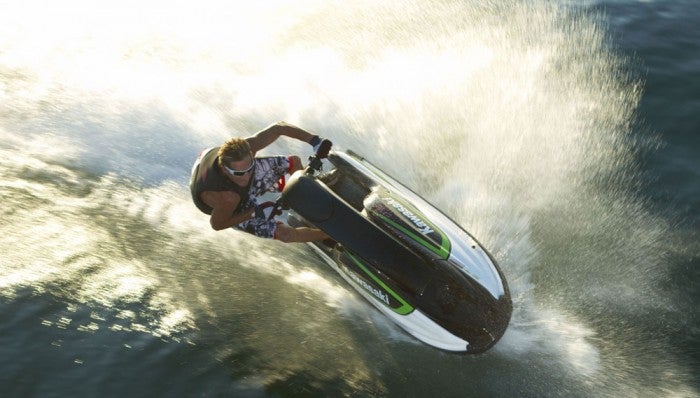
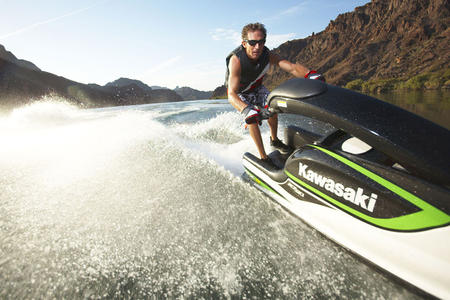
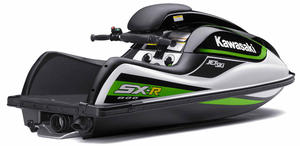
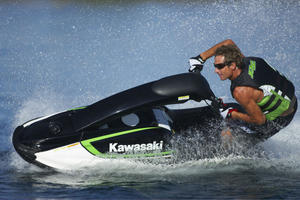
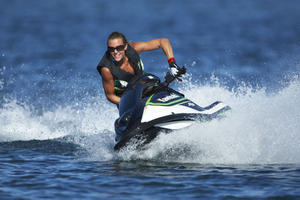
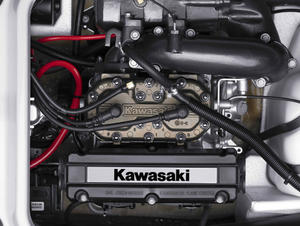
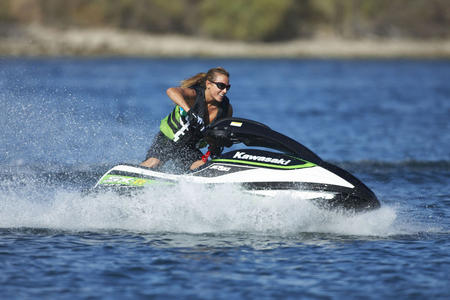
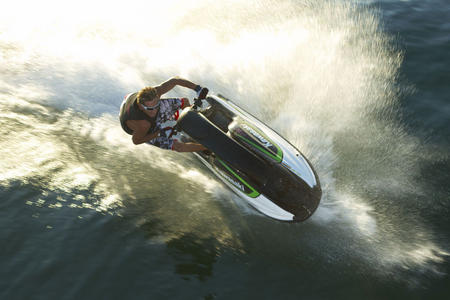









 Your Privacy Choices
Your Privacy Choices